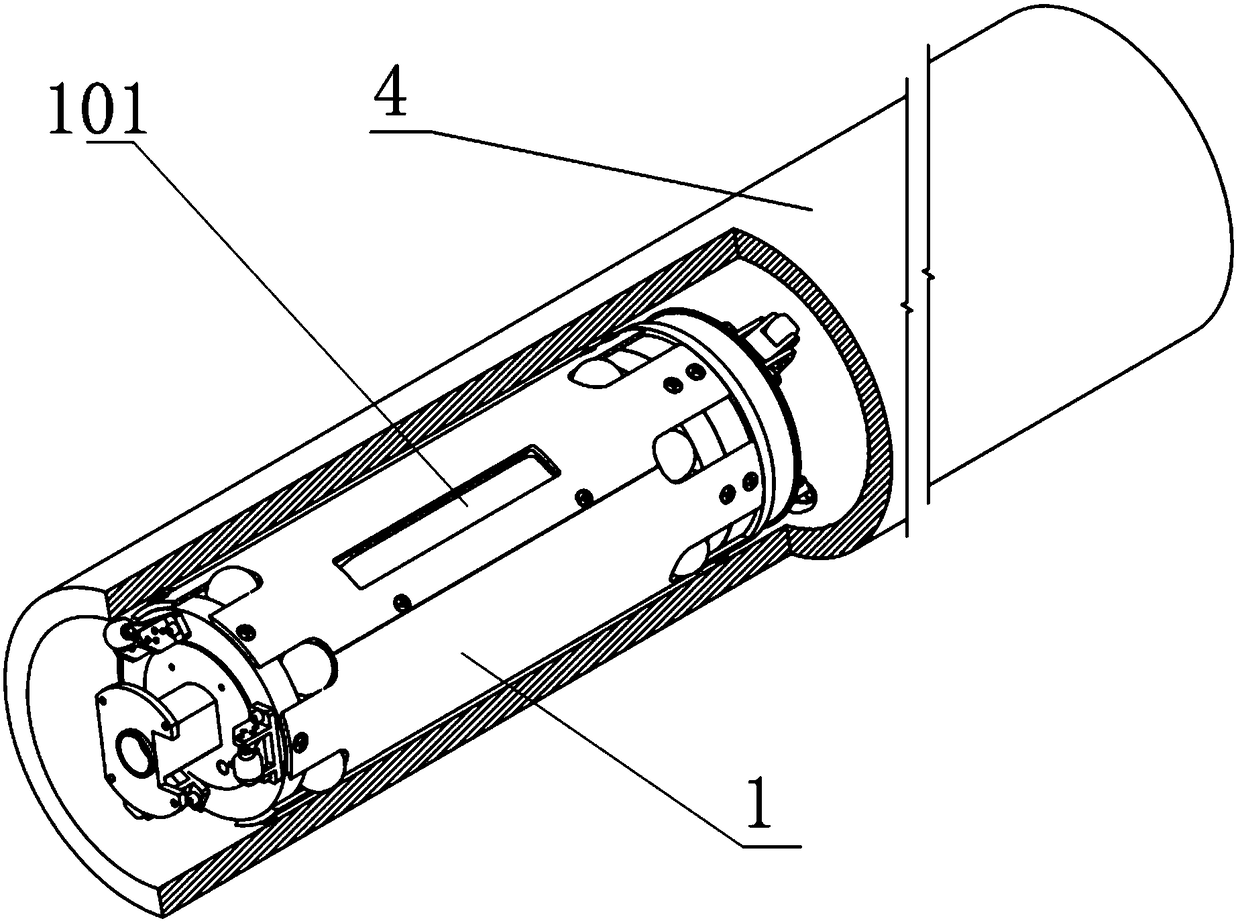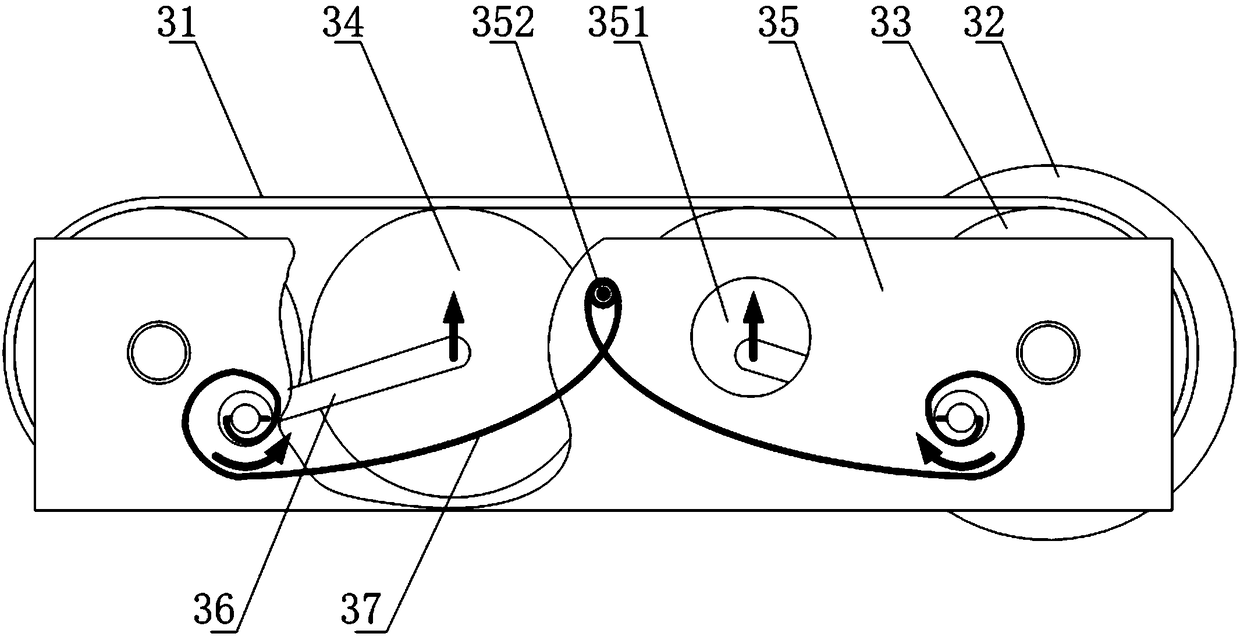Deep hole self-centering in-tube robot
A self-centering, robotic technology, applied in the direction of instruments, measuring devices, etc., can solve the problems of inability to accurately measure the straightness of deep hole parts, affecting the accuracy of straightness measurement, and inability to achieve on-machine measurement. Accuracy and stability, reducing measurement costs, increasing the effect of motion stability
- Summary
- Abstract
- Description
- Claims
- Application Information
AI Technical Summary
Problems solved by technology
Method used
Image
Examples
Embodiment Construction
[0040] In order to make the purpose, technical solutions and advantages of the embodiments of the present invention clearer, the technical solutions in the embodiments of the present invention will be clearly and completely described below in conjunction with the drawings in the embodiments of the present invention. Obviously, the described embodiments It is a part of embodiments of the present invention, but not all embodiments. Based on the embodiments of the present invention, all other embodiments obtained by persons of ordinary skill in the art without making creative efforts belong to the protection scope of the present invention.
[0041] Such as Figure 1-Figure 8 As shown, a deep-hole self-centering in-pipe robot includes a protective shell 1, three electric push rods 11 arranged in the protective shell 1, and the two ends of the protective shell 1 are respectively fixed with reflector bases. Seat 12, tail base 13, one end of the reflector base has a flat end face I1...
PUM
 Login to View More
Login to View More Abstract
Description
Claims
Application Information
 Login to View More
Login to View More - R&D
- Intellectual Property
- Life Sciences
- Materials
- Tech Scout
- Unparalleled Data Quality
- Higher Quality Content
- 60% Fewer Hallucinations
Browse by: Latest US Patents, China's latest patents, Technical Efficacy Thesaurus, Application Domain, Technology Topic, Popular Technical Reports.
© 2025 PatSnap. All rights reserved.Legal|Privacy policy|Modern Slavery Act Transparency Statement|Sitemap|About US| Contact US: help@patsnap.com



